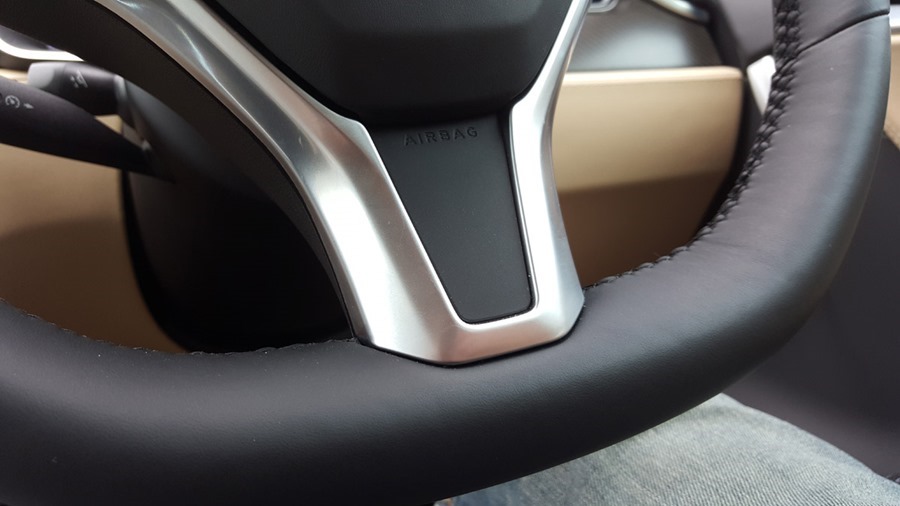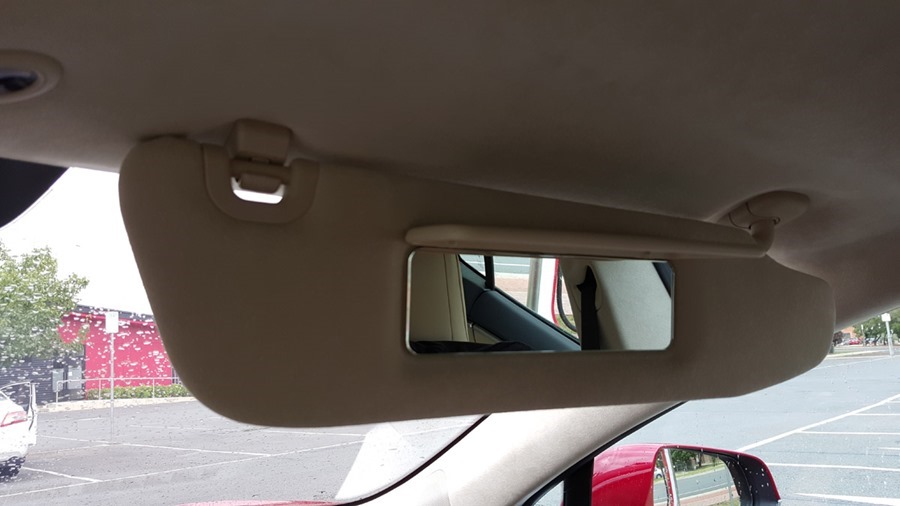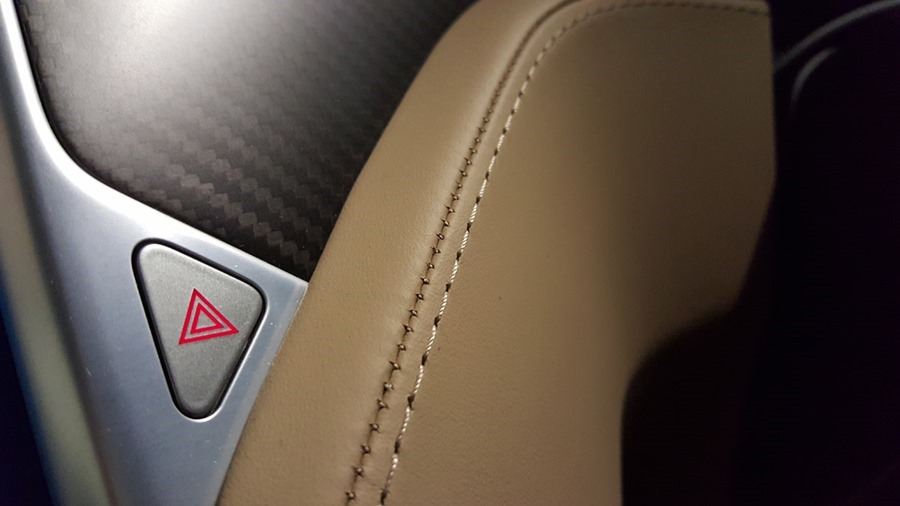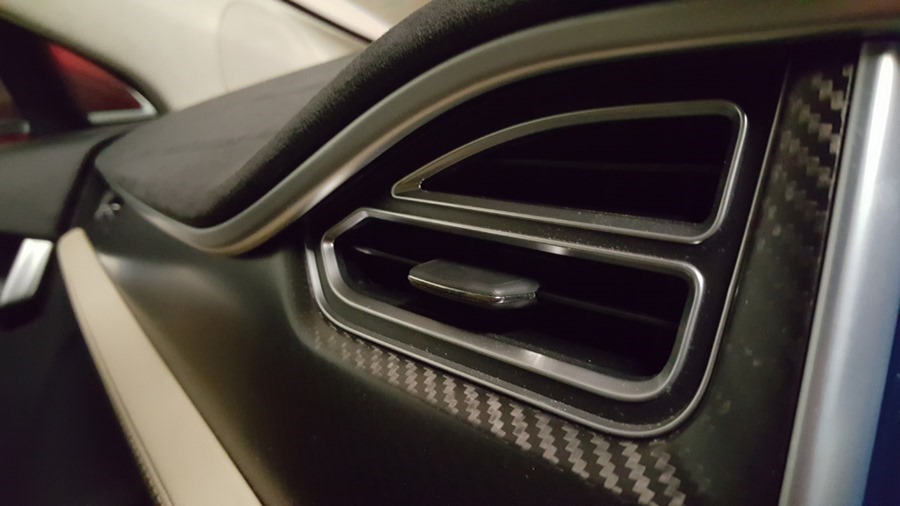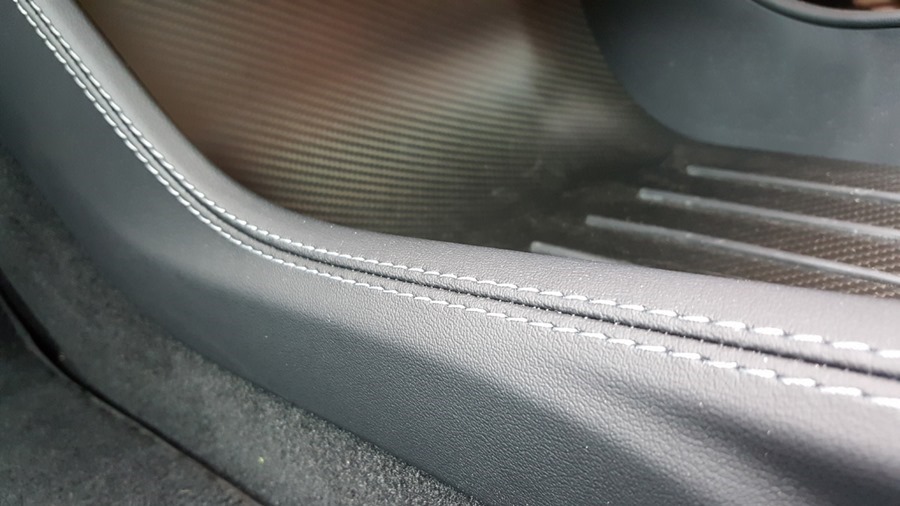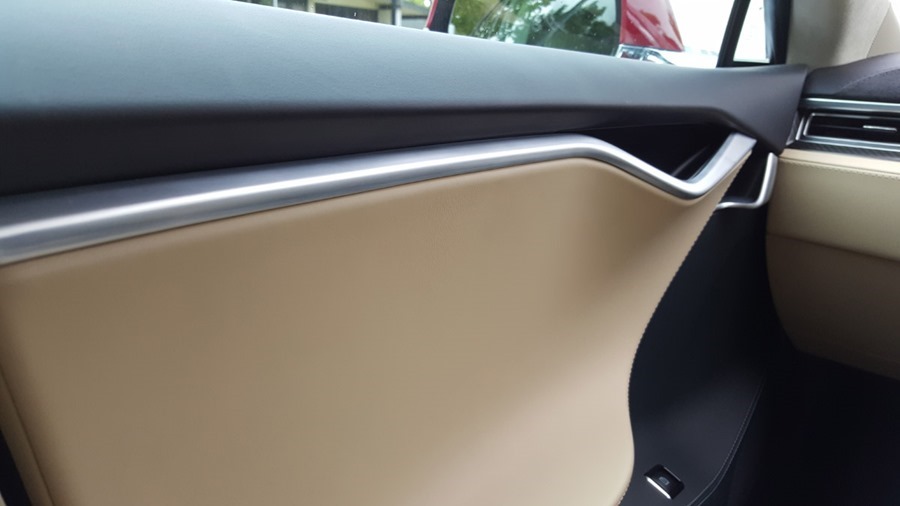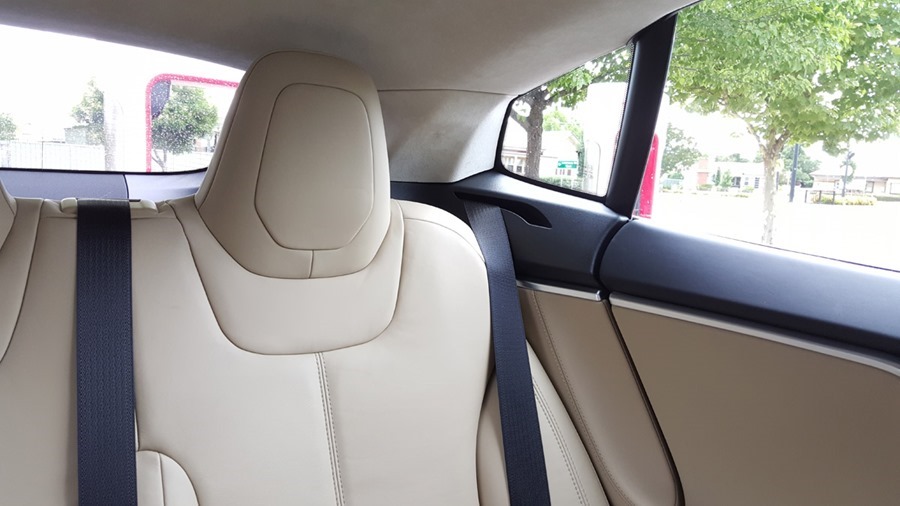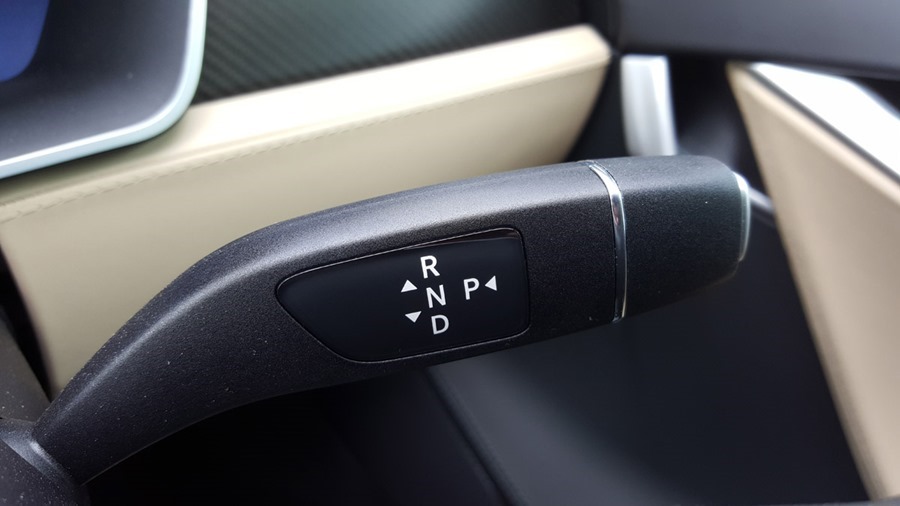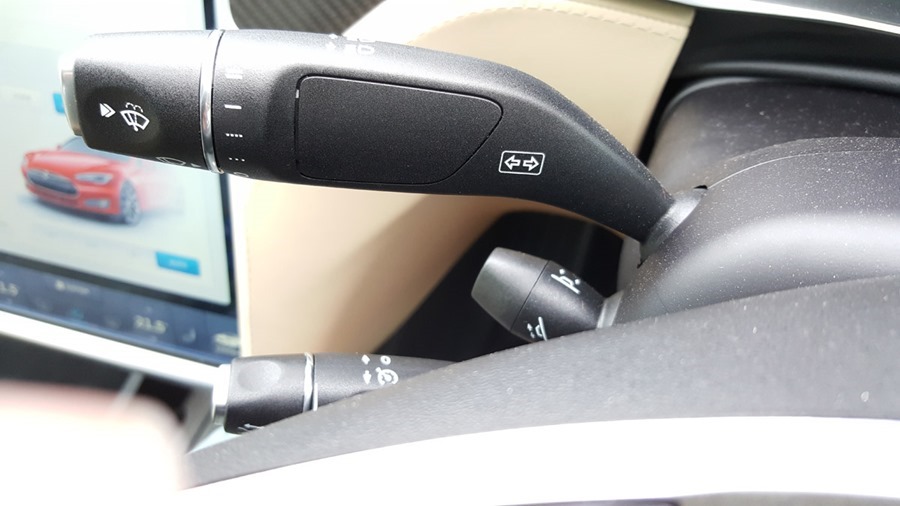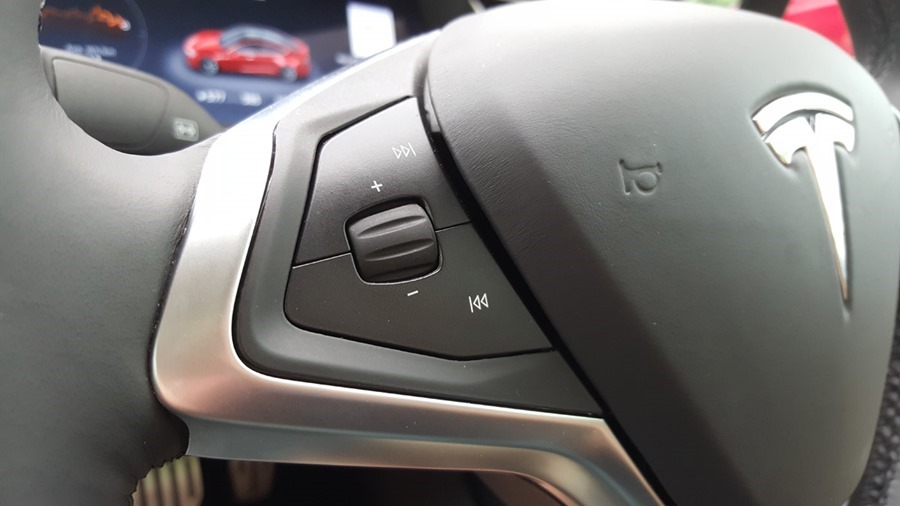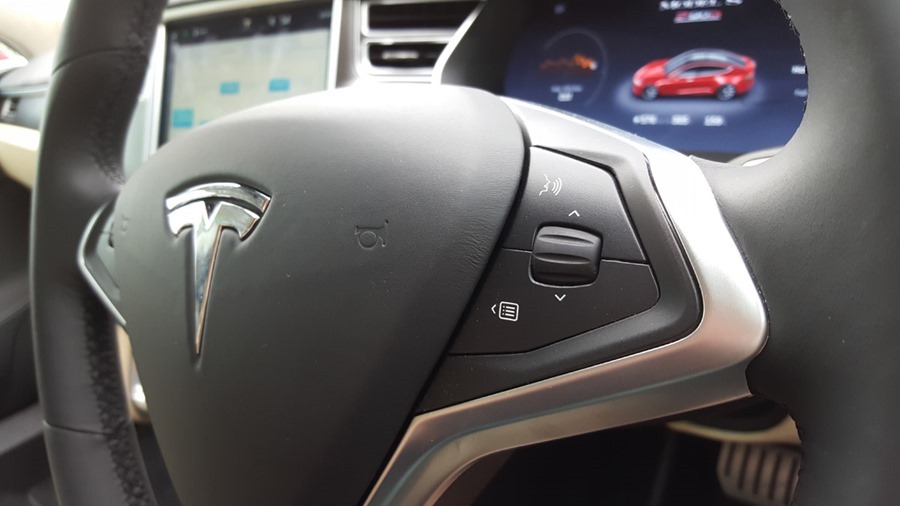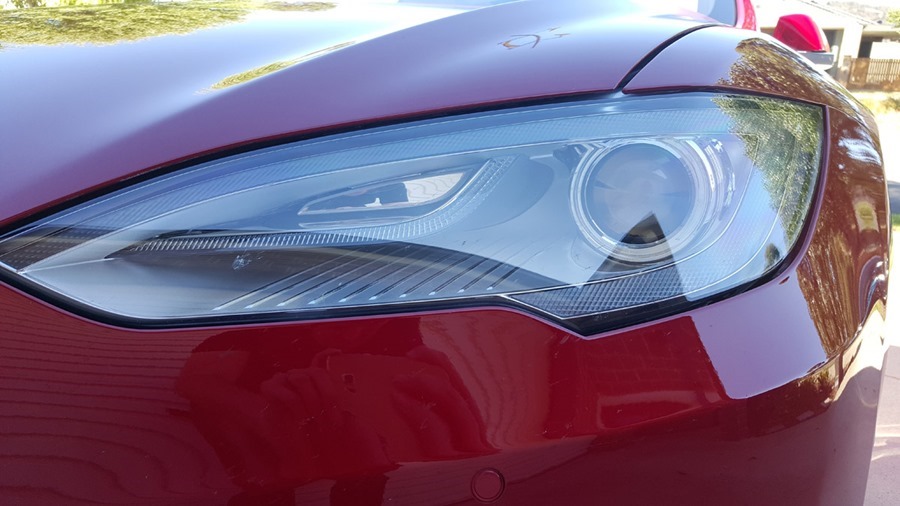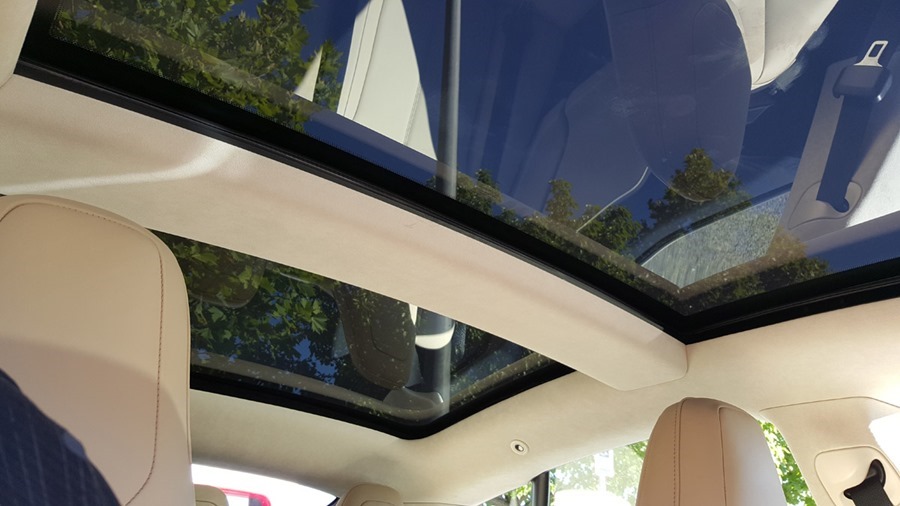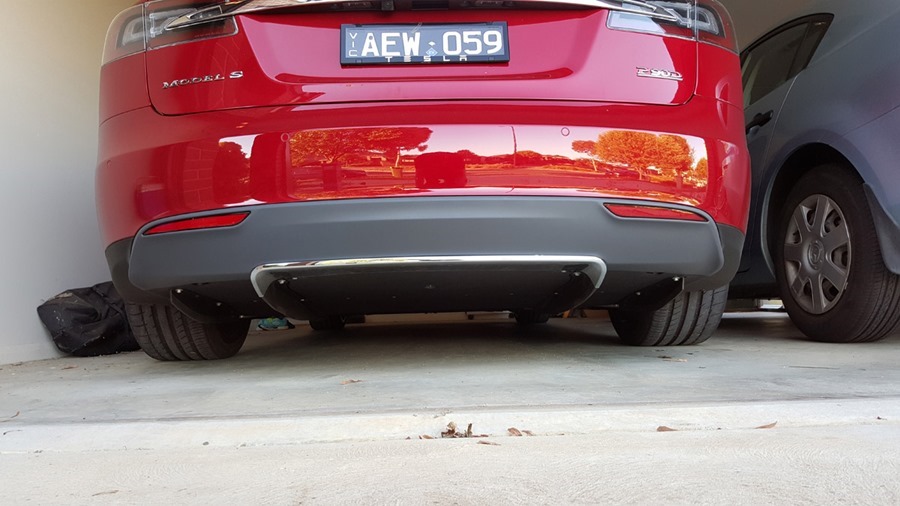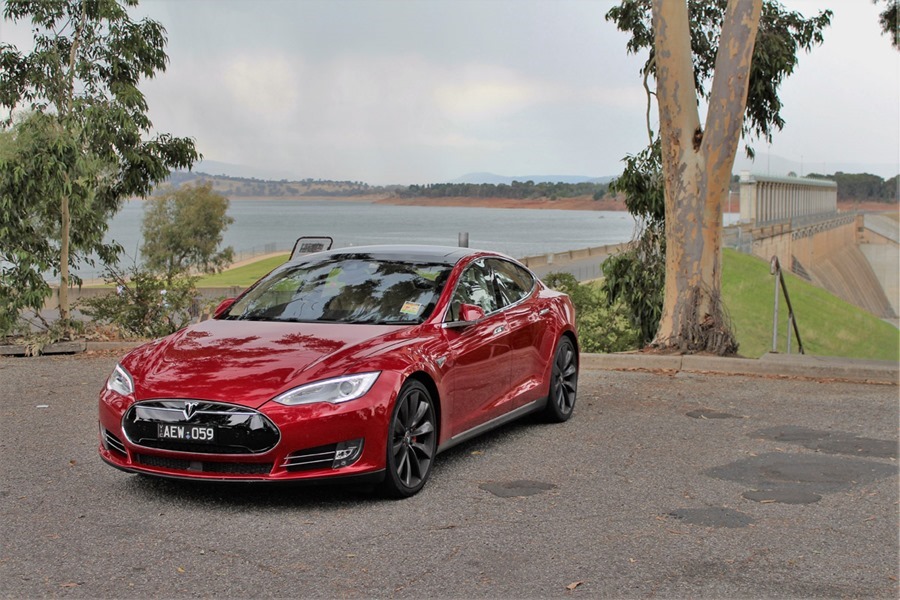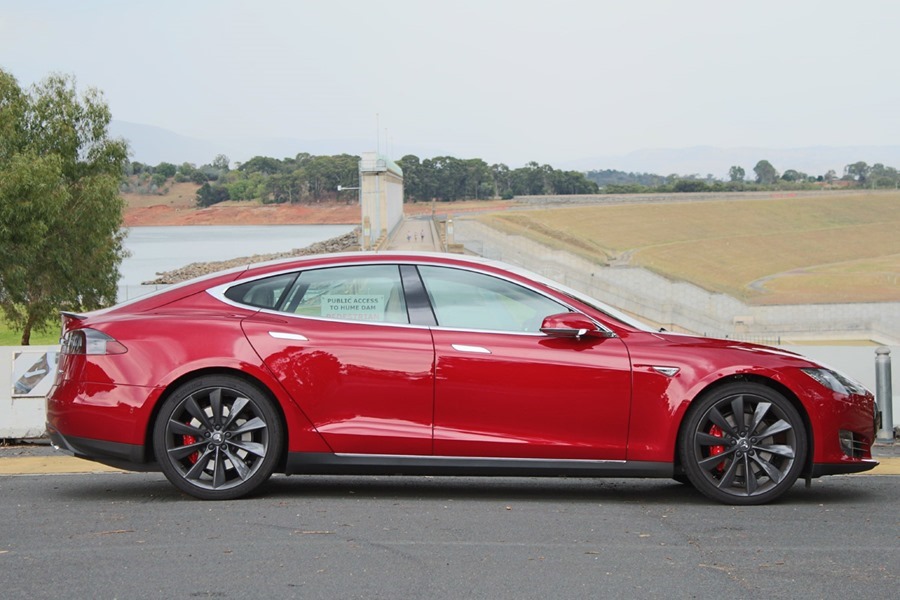

This is the Tesla Model S P90D. It’s the top model from Tesla, with a battery that’s good for around 460km, and it’s Ludicrous mode will activate the dual electric motors to accelerate you like a rollercoaster from 0-100km/h in around 3 seconds. The interior is filled with carbon fiber and stitched leather which adorns the 17” touchscreen that replaces physical knobs and dials. With that out of the way, now to the important part.
The Model S is from Tesla, a US company founded by Elon Musk, just 13 years ago. What this company has achieved in that time is remarkable. After Tesla released the Roadster in 2006, the Model S is just their second vehicle, amazing when they’re battling the likes of Ford, GM and Toyota with 100+ year legacies, a history that now counts for zero.
Tesla are a different kind of company, they’re a technology company and their ability to learn cars, faster than auto makers can learn technology is abundantly clear. In fact, they’re years ahead.
After a week behind the wheel of the Model S, I know this car is like no other on the road. It drives itself. Fully Autonomous vehicles aren’t supposed to be here till after 2020, but before the end of 2015 had arrived, I was driving one.


The technology
With Autopilot enabled, the car traverses the complex environments of our Australian roads with an effortless simplicity that puts a smile on your face thanks to the ridiculousness that is this ‘beta’ product. With the virtual lanes on the dash shining blue after a couple of pulls on the cruise control stalk, the car centres itself perfectly in the middle of the lane and is brilliantly accurate about maintaining it. Humans drift left and right as their attention is diverted, but in this way, Autopilot is safer, consistent and better than humans.
Autopilot uses an incredibly complex algorithm to determine how to control the vehicle both in a straight line, and around turns. The camera is constantly taking images of the road and these are interrogated for white lines that identify lanes. If the lines, solid or broken, exist on both sides of the lane, then the system has confidence about the width and direction of the lane. Should the outside line break, like it does for a side street, the system looks further ahead and if it can determine the trajectory of the lane, it can resolve that the lane continues and continues.
When you reach a part of the road where the left edge (indicated by a white line) of the road drops away, then the car’s smart enough to then hang off the data on the right, regardless of the adjacent lane type. Oncoming traffic next to you isn’t a problem, the lane you’re travelling in is priority number one. There are times where the car ahead of you is leveraged for information to the system as well, this makes some assumptions that you’re following the vehicle ahead and as long as they don’t turn, that vehicle’s path, is used to help control your vehicle.
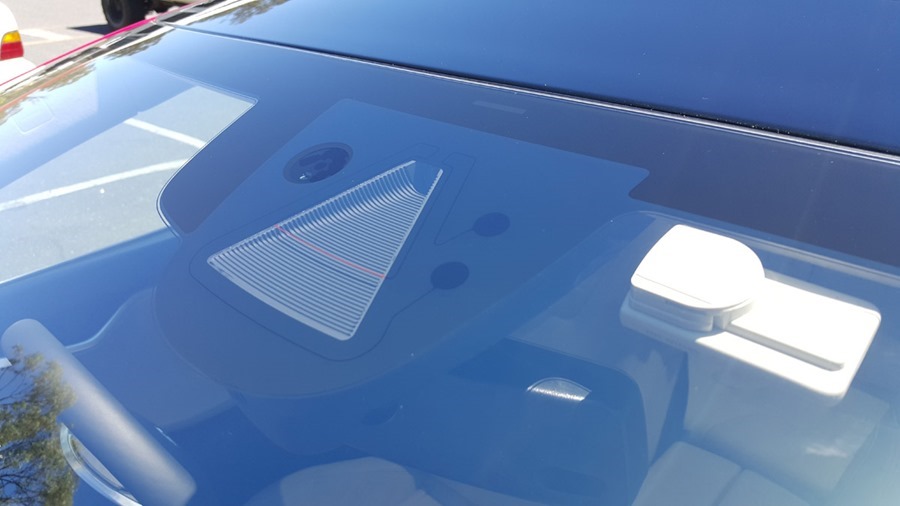

The system has to have priorities and never deliver conflicting instruction sets to the cars computer. Imagine if one parameter was telling a wheel to speed up (like cruise control), while another tells it to slow down like traction control, there has to be a strongly enforced hierarchy and fail safes, for the fail safes to make this work correctly. It works staggeringly well, but still does ask you to take control at times, where it doesn’t have confidence about the environment around the vehicle.
Passengers are slightly scared at first, then like you as a driver, become confident in the Autosteer ability, in an incredibly short period of time. While it was tempting to show your free hands to other drivers, they’ll be likely to call the police, rather than understand that this vehicle is different to every other one on the road.
The system alerts you with a visual prompt and audible alert (even turns down your music) if you have to take control. You can manually turn it off by turning the wheel or tapping the brake. Like cruise control revolutionised my parents generation of driving, Autopilot will revolutionise mine.
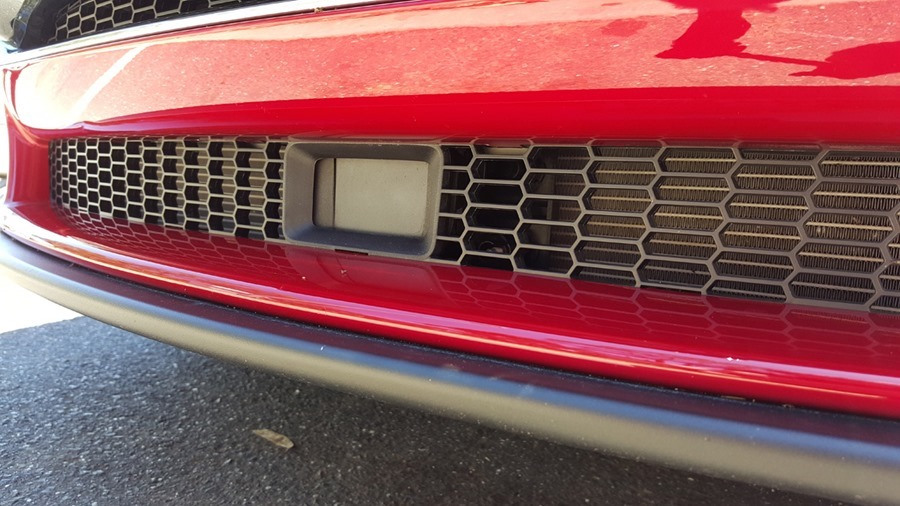

Adaptive Cruise Control
Not unique to Tesla by any means, but ACC is a key part of the Autopilot system and even if activated alone (meaning you still steer), the feature makes travelling in traffic a breeze. This can mean the difference between a daily commute being acceptable and not. The end of the cruise control stalk twists to set the distance you want to travel from the car ahead. It offers settings from 2 to 7 car lengths; I found 4 works great.
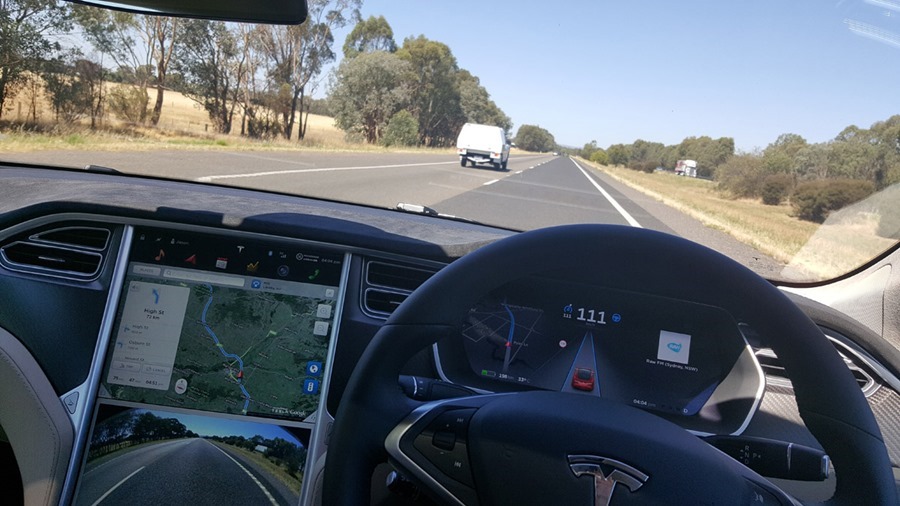

Assisted lane changing
This feature has changed through recent software updates, with autopilot enabled you turn your indicator on to make a lane change, the car will performs the lane change and you flick off the indicator when you’re in the new lane. For the feature to work now you need your hands on the wheel, however I’ve seen videos online of people flicking the indicator on, the change taking place, without hands connecting to the wheel. If the sensors around the car detect objects like other vehicles beside you, it’ll wait for them to move before migrating lanes.
With our vision impaired by blind spots, we’re not always best placed to make the ‘is it safe’ assessment. With the vehicle data coming from a place externally on the vehicle, this isn’t obscured by other occupants, A and B pillars or head rests. This feature will prevent accidents.
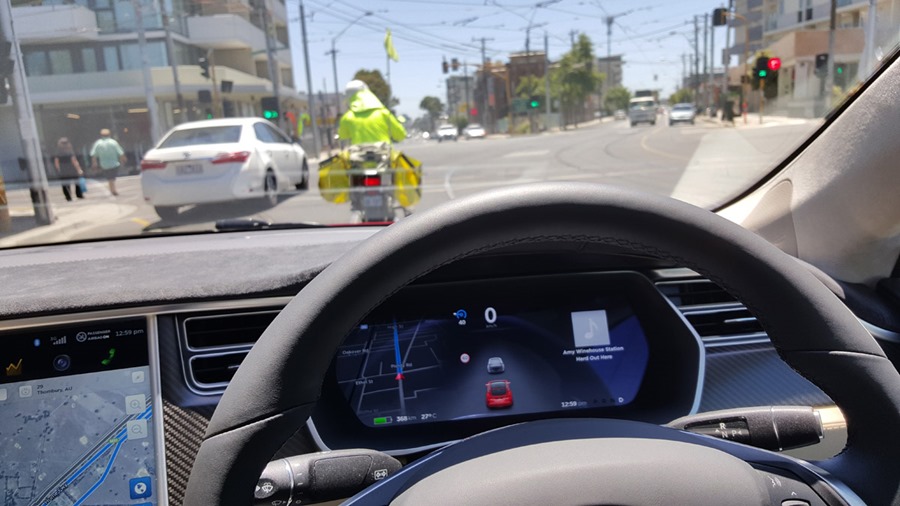

Speed sign recognition
The system can read speed signs, but won’t adjust your speed automatically. The capture, recognition and understanding of an Australian speed sign is one thing, but Tesla engineers made a decision to not simply see the sign and display it to the user, no, they calculate how fast your going and how long it’ll take for you to actually break through that speed zone and only then does your display show the new speed zone. This is the kind of attention to detail that you can appreciate goes into car after living with it for a few days. The little things add up to a lot and there’s an awful lot of very smart little things in the Model S.


Traction Control
Getting the power to the ground is only effective if the power is delivered to the wheels and they don’t break traction with the road surface. The second they do, you’re loosing potential acceleration. To achieve the stunning acceleration of the P90D, Tesla applies millisecond assessment of the traction and makes sure accelerating is idiot-proof.
To go fast in the Model S, all you have to do is plant the right foot, the car surges forward and just keeps going for as long as you hold it there. No shifting gears, no clutch to worry about, just look forward, hold the wheel and you rocket forward like a theme park ride. Your body presses back in the seat and you get the exhilarating forces that make you smile like a kid on Christmas morning. Its infectious and never gets old.
It’s often where people break traction that drivers get into trouble and accidents, so again, while the focus is performance, the side effect of TC is safety.
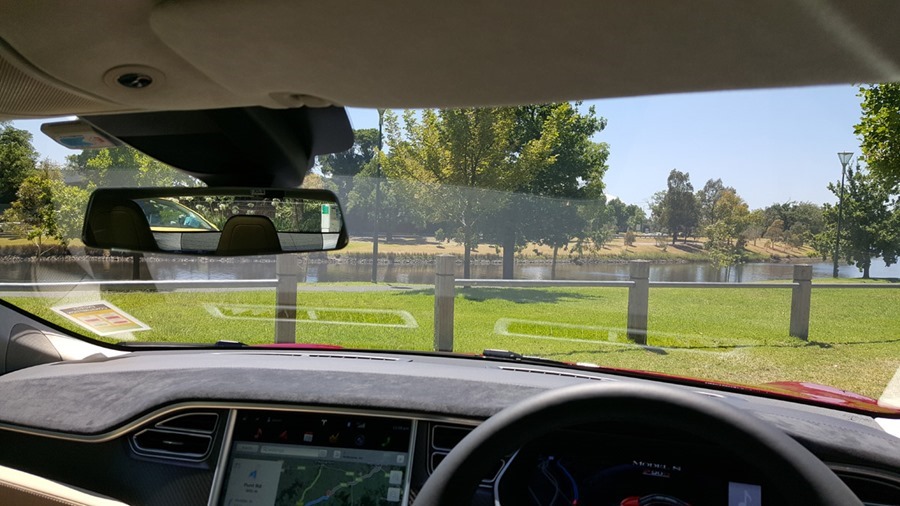

Park Assist (Parallel)
The car can park itself, although this is one of the weaker features of the Model S. It only works if you have a car in front and behind your desired parking spot, are moving below 7km/h and there’s the right amount of space to maneuverer. Personally I’ve never had much of a problem performing parallel parks, but have been in cars where others will not park at a location due to inability to do it reliably. That’s what Tesla’s park assist offers and with the process of performing the park well understood, automating it is relatively straight forward.
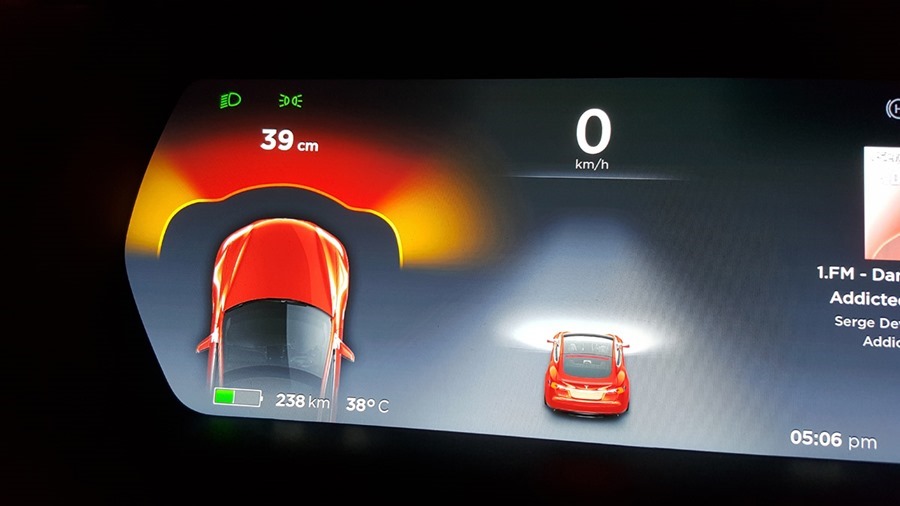

Collision avoidance
The Model S is constantly monitoring for objects that get too close. That may be another car, but could be a person, fence, mailbox etc. In an emergency situation it will apply the brakes in an attempt to decrease or avoid damage, almost like a self-protection mechanism if the human behind the wheel hasn’t responded in time.
The sensor data is also handy when parking in a garage, with a precise cm readout on the driver’s display, which shows how far objects are away from the vehicle.


Adjustable Air ride suspension
Roads are full of objects of different heights. There’s speed bumps, steep driveways that the car needs to be able to deal with. Tesla didn’t just implement static suspension, they give buyers an option to add adjustable air suspension. As you drive around the world and you encounter one of these steep or high obstacles, you simply tap controls, suspension and when you do that, the car records the geo-location and remembers it. The next time you drive to that location, the car will automatically adjust. That’s just smart right, it’s next level thinking that simply checking the handling box and going home.
This car feels like the engineers experienced these issues personally and went after them in the best way possible, not the easiest way, but the best way. Often these technology pieces require integration with 3 or 4 other systems in the car to work.
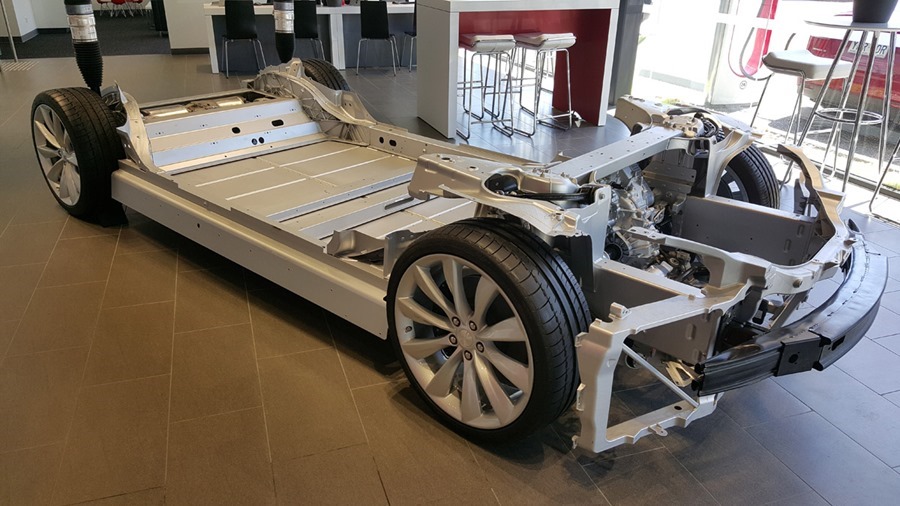

In the Richmond showroom, Tesla has a Model S dual-motor frame on display to showcase the infrastructure, the platform of the car. This allows sales staff to easily explain the placement and safety of the battery technology in the car. If you’re ever nearby, I recommend you drop in and have a look.
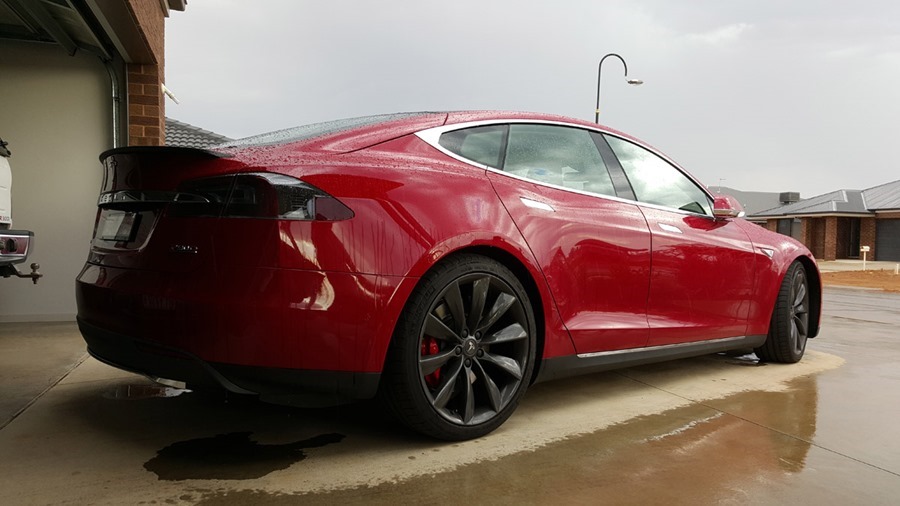

Retracting door handles
When the car is locked, the door handles are flush with the body. As you approach the door handles present themselves to you, ready to welcome you to the vehicle. This is a subtle but important touch, like them auto-retracting when you walk away from the car. This is a reasonably common proximity sensor, but the reason the retract is much more important.
Tesla is striving for absolute range and they are achieving numbers up to 5 times the range. Sure adding more batteries is part of it, but at Tesla, there’s attention paid to every last bit of drag that is the enemy of range. Each of the 4 door handles create drag when the car is flying down the highway, so the solution is to make them disappear into the body. This creates an undisturbed, streamlined the airflow around the side of the body, yielding a few more km, everything counts.
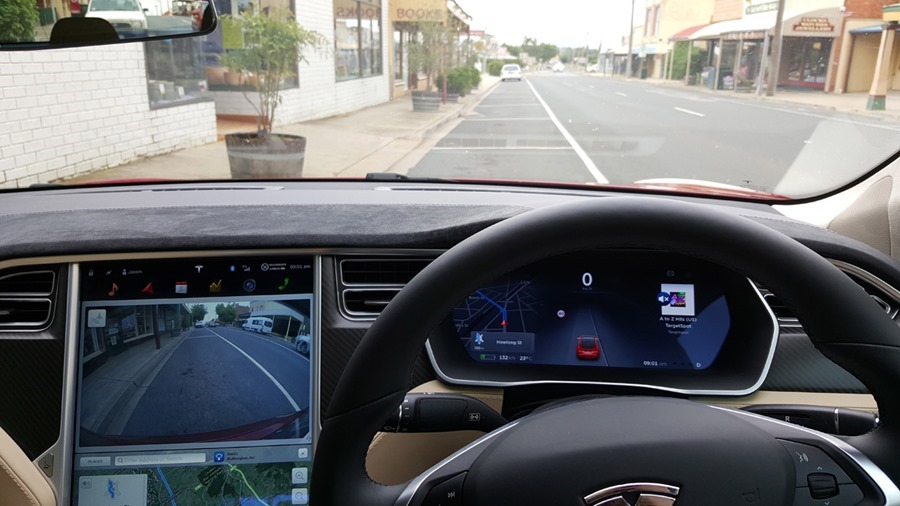

Reverse camera
Something most cars don’t do is allow the reversing camera to stay running once you drive forward over about 20km/h. For some reason Tesla allows the reverse camera to stay on the whole time. Personally I think this is awesome, its great to see how close people behind are travelling, especially considering the view out the rear vision mirror is somewhat compromised by the rear seat headsets.
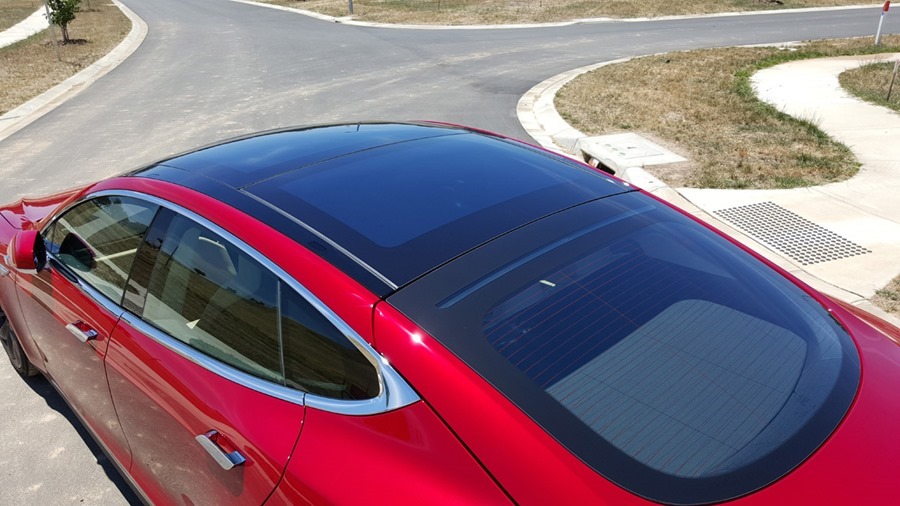

Sunroof
The sunroof is controlled, like much of the Tesla, directly through the touchscreen. Just slide the digital slider down to the percentage you want to open and close it in less than 10 seconds. There is no speed limit to operating it and with all that glass on the top of this Model S, its thankfully tinted to avoid the heat from giving you a top-down sun tan.
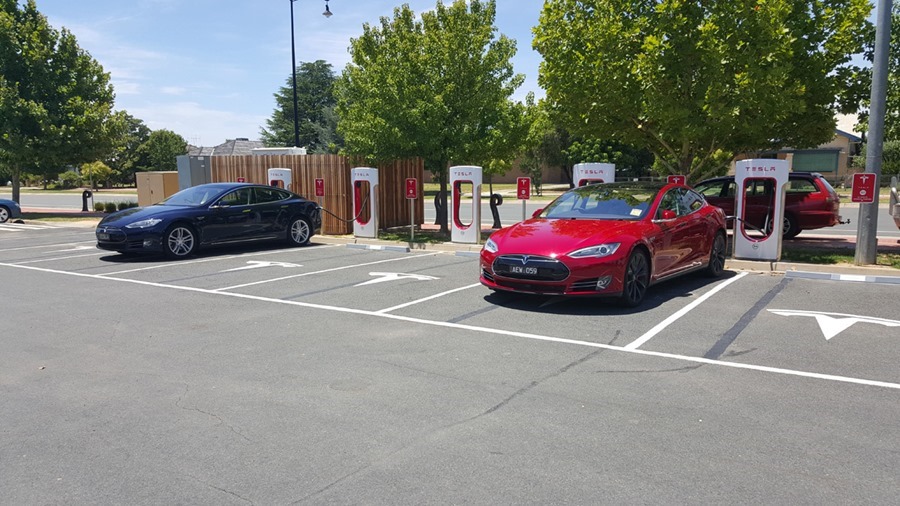

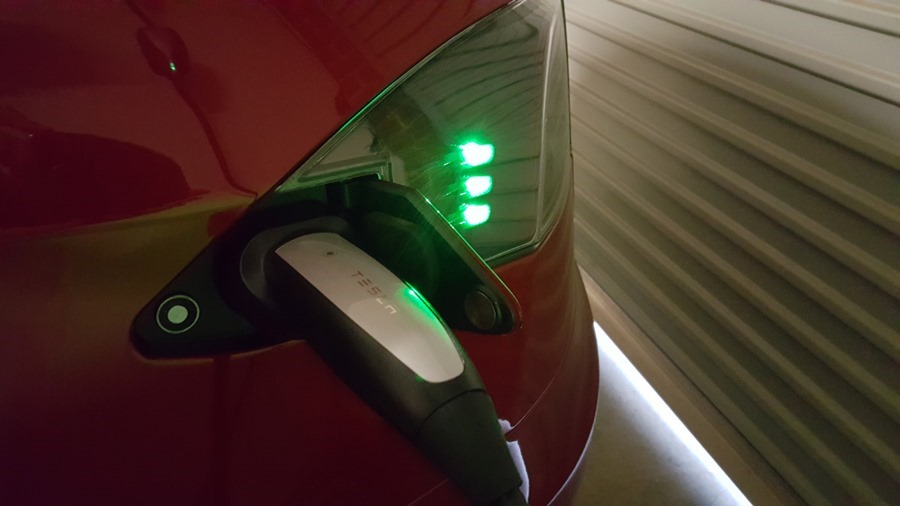

Charging lock
Many people wonder about the charging process with the Tesla. They have absolutely considered this process carefully. When you connect to a charger to the charge port, you’ll get 3 green lights that indicate the connection has been successfully made. At this point the charger locks into the port and no amount of pulling on the cable will release it.
Like Excalibur, you as the owner (and the key in your pocket) can simply walk up, press the button and the charger will unlock. This prevents mischievous people from unplugging your car when you really need it to be charging.
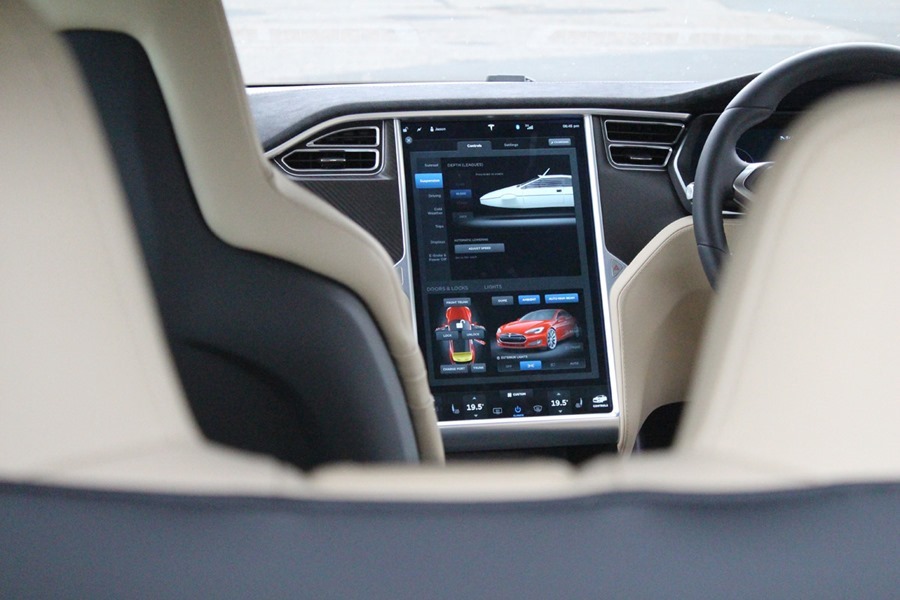

Performance
Forget Ferrari’s, forget Lamborghini’s, Porsche and Audi, this car does things others simply can’t. It looks like a Maserati crossed with a Jag, and with the red paint it certainly turns heads, but what people don’t understand is that lying beneath your feet, is a lithium-ion powered supercar on-demand.
This car will apply 1.3 GeForces if you want it to, that’s insane performance for a production car. While it doesn’t break physics, it will break your mind, when you understand that this is the easiest car to drive. If you want to look like a rock star, buy a Model S. It’s Golf Buggy simplicity means your input is go and stop, but the art in what Tesla engineers have done, is to make 2,650kg disappear completely.
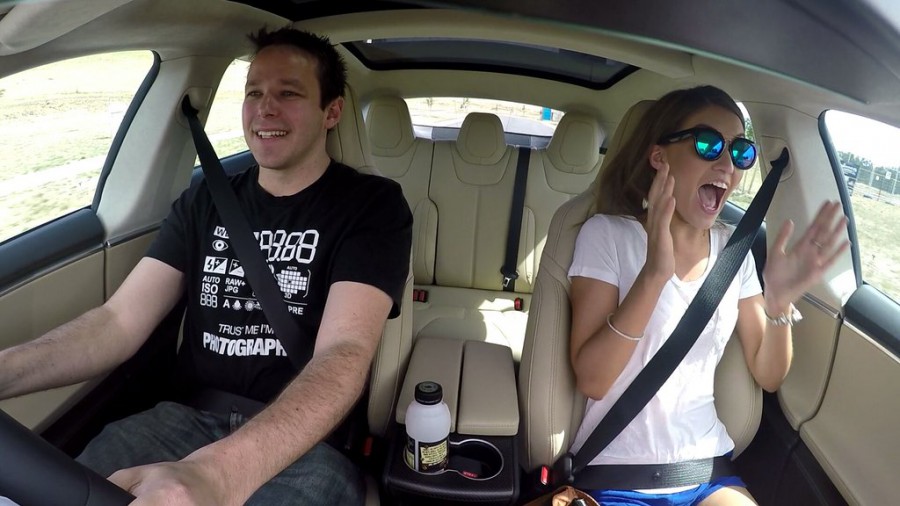

The car will take just 3.3 seconds to get from 0 – 100km/hr. If you enable Ludicrous mode, and ask for maximum battery performance, the battery heats or cools to delivery absolute max power. If the planets align, you should be accelerating to the same speed in just 3.0 seconds. Its time Australia realise, V8s are dead, this thing just killed them, with a 375kw rear electric motor and 193kw front motor. A combined 397kW in this car and the best bit, its all available all of the time, with 967Nm of torque, it doesn’t matter if you’re at 0 or 100, the seemingly endless power pushes you back in your seat.
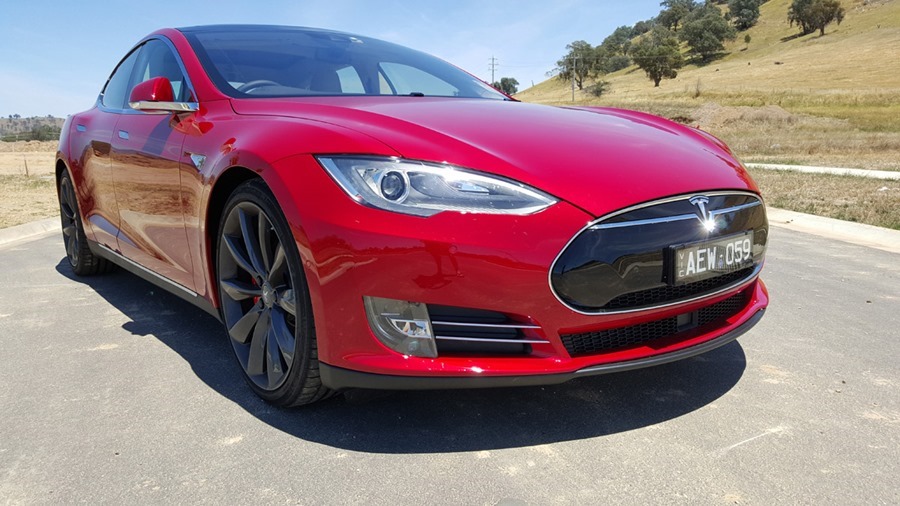

Handling
The handling on this car is phenomenal and that certainly hasn’t happened by accident. The aluminium chassis of the vehicle stores the heavy battery low to the ground and combined with the air-ride suspension, traction control and 21″ Michelin rubber, the car has so much grip through the turns, it makes for a simple, accurate, enjoyable driving experience.
While there’s no flashy dynamic wing on the rear of the car, it does transform. It’s a daily driver when you want it to be and when you need it, it’s instantly converted to a rollercoaster, just by pushing harder on the right pedal.
With a lot of high performance cars, they’re terrible at going slow, but the Model S and its all-electric power train applies the power linearly, and with traction control, you never break traction with the road. There’s no sliding, no drifting, no nonsense, because those are not only inefficient, they’re unsafe.
While you can buy a Tesla Model S without the Autopilot option, it’d be so much less of a car without it. The speed is insanity, the handling is brilliant, the looks are gorgeous and the touchscreen interface is a revolution, but the autonomous part of this vehicle is the star for me.
Long drives, like the Hume Freeway between Melbourne and Wodonga, are physically and mentally taxing on drivers. Using the combination of cameras, radar and sensors, the ability for the car to understand its place in the environment around it is fantastic already, not perfect, so close it almost doesn’t matter.
While the will certainly improve over time, it’s the software that interprets that data and makes decisions based on it, within fractions of a second, that’s the key. And when software is the difference, you need the best engineers to write that software to lead the industry. Make no mistake Tesla’s 12,000 strong workforce includes some of the smartest minds on the planet.
If the best talent from other auto manufacturers have been poached by Tesla and Tesla are years ahead with this technology, why would you go work anywhere else ? If you’re a software developer, computer engineer, you have a clear market leader that you’ll migrate towards, so the competitors better have some A grade hiring strategies if they want to keep Tesla a relatively small player in the overall auto market.
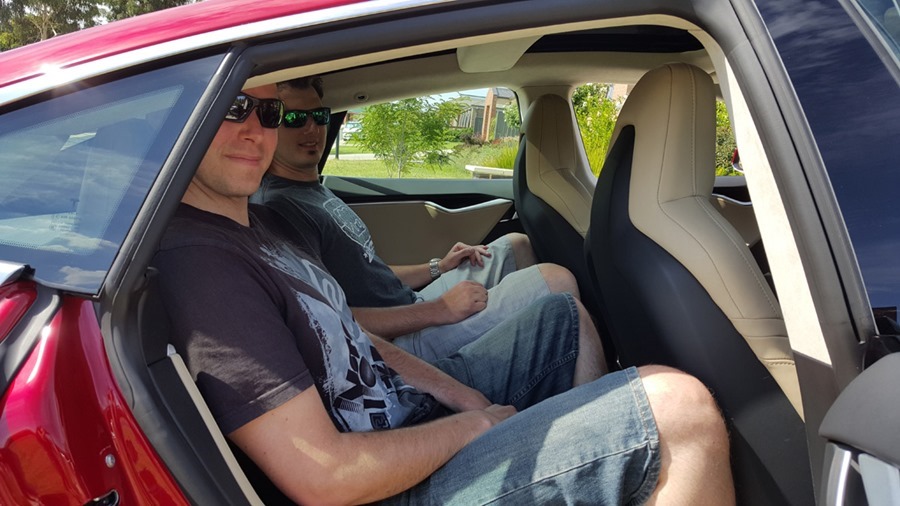

Room for improvement
No car is perfect, and the Model S is no exception. While they’ve thought of so many little touches to make the experiencing of owning and driving a Model S a delight, the work is not done and these things should be considered for future models or revisions.
- Noise – While the vehicle is amazingly quiet, this leaves the road noise as the loudest part, good problem to have, but this could definitely be improved.
- Phone connectivity – While phone calls are supported well, SMS and social media are completely missing from Tesla’s software. Having my phone buzzing in my pocket and not knowing if that’s an important email or a RT from the Prime Minister is a missed opportunity.
- No 3rd party app support – Tesla only support first part development, the car would be a much better vehicle with an app store. They should never have had to choose the now discontinued Rdio over Spotify, they should have all music streaming services and would do well to learn from SONOS.
- Rear USB ports or cup holders – At this price point, these are expected.
- Passenger preference – Driver profiles remember their settings, but why not passengers, its likely you’ll have consistent once riding shotgun.
- No spare tyre – This is an issue for everyone I spoke to, no backup means you could be stranded. Also you can’t buy the tyres on this car in Australia, they’re not listed on the Michelin website, they’re a Tesla special.
- Visor mirrors – Alignment of these are weird due to the curve of the roof line.
- Headspace in rear – Due to the curvature of the roof, head room is a problem for tall people. I’m 6”3’ and while I fit, I wouldn’t enjoy a long journey like that. My head sat against the side of the roof structure.
- Vehicle types – Right now a postie bike, a SUV, a truck are all represented as a car on the driver display, this ideally would display the vehicle type ahead of you.
- In-cabin storage – No closable storage other than glove box, the bag stow is fine between driver and passenger, but I don’t always carry a bag.
- Coin tray lip – The compartment under the screen is doesn’t hold objects, the lip is not inclined enough, so sunglasses, phones etc will fly out even under mild acceleration.
- Wiper speed – Windscreen wipers aren’t fast enough to clear severe rain.
- Voice control – Very limited, would rather a steering wheel button to activate the voice assistant on the phone (Google Now or Siri)
- Range issues – Unless you want to power off 240v, owning or travelling too far from the east coast is still a problem, this will be solved, but something to be worked on.
- Price – The batteries make up a significant portion of the price and as the cost of lithium-ion comes down, the car will get cheaper.
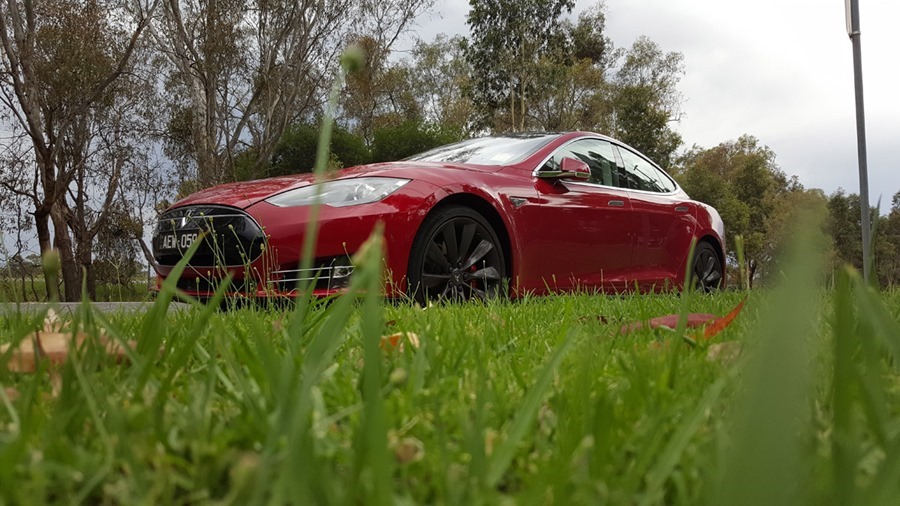

Price & Availability
The Model S P90D outperforms, outlasts almost every other car on the market and the only thing people knock it for, is the price. In Australia, this doesn’t come cheap, but we’re a nation familiar with the early adopter’s tax and certainly attracts its fair share. What isn’t helping is the government luxury car tax and stamp duty, which adds around $45K to the price in Victoria.
Our review model has all available options from the Tesla website.
- Ludicrous Speed Upgrade – $15,000
- Carbon Fiber Spoiler – $1,500
- Autopilot – $3,800
- P90D Range Upgrade (85-90kWh battery or 6% distance)
- Premium Interior and Lighting – $4,500
- Smart Air Suspension – $3,800
- Ultra High Fidelity Sound – $3,800
- Subzero Weather Package – $1,500
- Red Multi-Coat paint – $2,300
- All Glass Panoramic Roof – $2,300
- 21” Grey Turbine Wheels – $6,800
- Tan Next Generation Seats – $3,800
- Carbon Fiber interior – $1,500
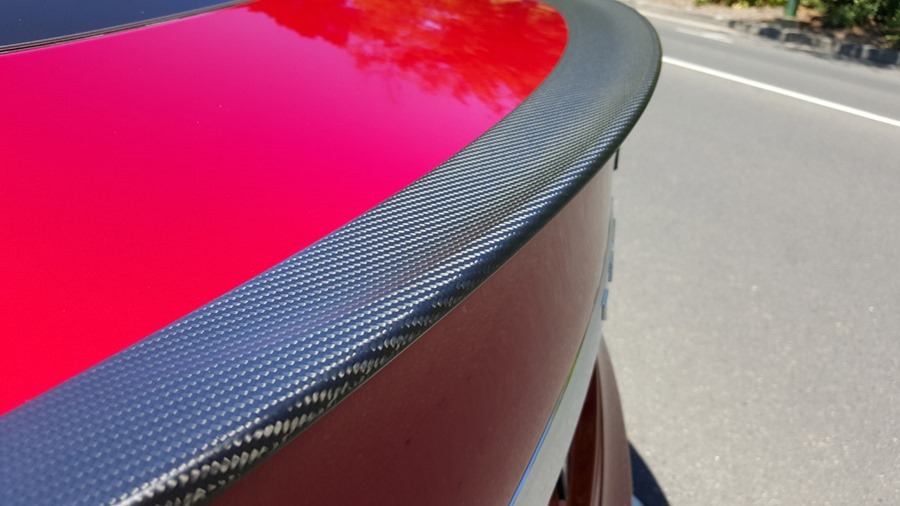

In the US, you can also option rear facing seats for US$3,000 which lets the Model S carry up to 7 passengers. These fold completely flat when not in use. It’s a shame these aren’t available in Australia.
This brings the total price of this car, with all the options to $277,545, $43,418 of which is Luxury car tax which you’ll pay in any state. Despite that significant part of the price, it is actually discounted by $4,750 over comparable petrol powered cars, thanks to Australian EV incentives. If you take this and fuel savings over 5 years (estimated at $14,000) then the price ends up at $263,545.
The stamp duty differs dramatically between states and in Victoria it’s $13,707. Check the Tesla website for your state or territory.


The same car in the US costs US$141,500.


If you order one today, you’ll have it in late March. While the price for the top model is steep, there are plenty of vehicles that cost more and do less and none of them do what this car can do.
Tesla have announced they are working on the price and in 2017, we’ll see a far cheaper Model III. The car is expected to be slightly smaller, but still contain many of the great features and technology inside the Model S. They’re currently targeting around US$35,000 which is expected to be close to A$50,000 by the time it reaches Australia.
If Tesla can hit that price point, they open themselves to a far greater market and a far more achievable price for many.
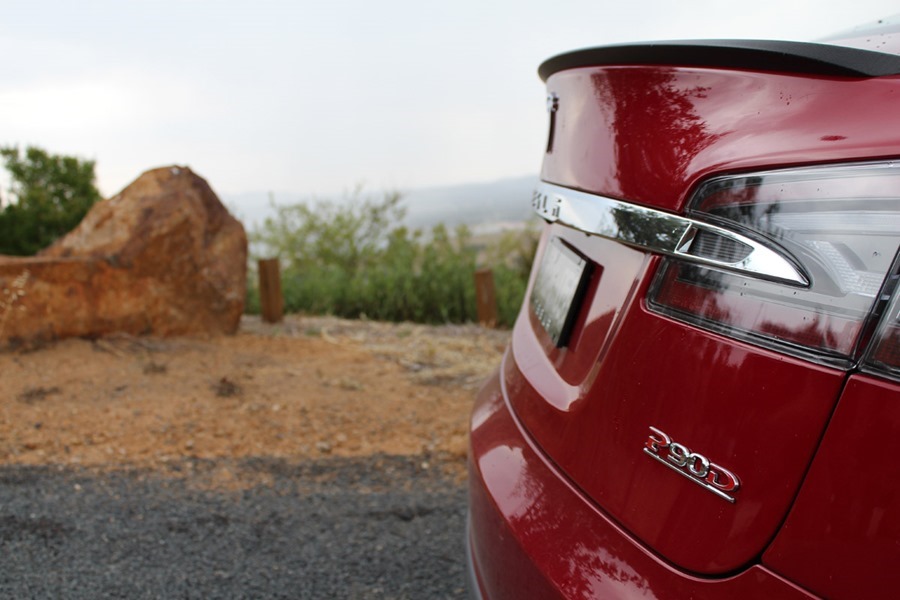

Overall
The Tesla Model S P90D is a phenomenal vehicle, its ludicrously fast, handles like a dream and makes you feel like the best driver on the planet. It looks fantastic, is comfortable to drive and drives itself down the freeway. There’s so much to like here, but the competition is coming, don’t rest Tesla, keep innovating and bring that price down, because if we’re serious about actually solving the road toll, its going to be technology that does it, not humans.
You may have noticed that I haven’t talked at all to the environmental aspect of this car. That’s because electric vehicles are so clearly the way of the future and that to me is simply a checkbox feature, its not exciting, its just necessary. The brilliant thing about the Model S, compared to a Prius, a Leaf or an iMiev, is the way it looks and performs. It looks fast standing still, something you’d actually want to drive and something others are jealous they don’t have.
As someone with aging parents and brother with epilepsy, autonomous vehicles need to happen sooner rather than later and I’m gracious to have had the opportunity to drive one when the calendar still said 2015.
I really expected to miss the sound of an induction noise from cold air intake and the rumble of an exhaust, but I don’t. Instead I enjoy the futuristic whir of the electric motors going to work. I never thought too much about noise pollution from vehicles, but after enjoying this, it reminded me of being at the relaxing Hamilton Island, where almost everyone gets around in electric golf carts.
Thanks Tesla, every other car I drive, is basically a bucket of bolts compared to this. I don’t want to give this back.
